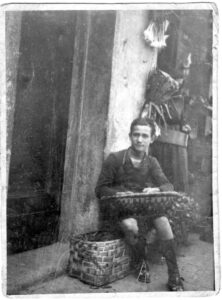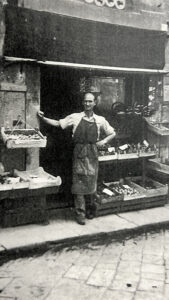Fatacadabra: una bottega con 120 anni di storia
[ENGLISH TEXT BELOW]
La signora Ornella è molto anziana, veste con cura ed eleganza, è curva, cammina appoggiandosi a un bellissimo bastone oppure alla figlia Donatella, che la accompagna dappertutto, anche oggi, quando si affacciano alle vetrine della nostra bottega in Via Santa Monaca 11 Rosso a Firenze.
Dal mio tavolo all’interno, le vedo che osservano attentamente, a lungo, poi entrano, parlottano, si guardano in giro.
É chiaro che non sono minimamente interessate ai nostri lavori.
Donatella aiuta la madre a scendere le scale, Ornella lo fa con difficoltà e sforzo ma si vede che ci tiene.
Comincio a incuriosirmi: questa signora vuole vedere tutto, anche se ciò comporta grande fatica per il suo fisico. Perché? mi chiedo.
Si accorgono di me e lì inizia un viaggio nel tempo.
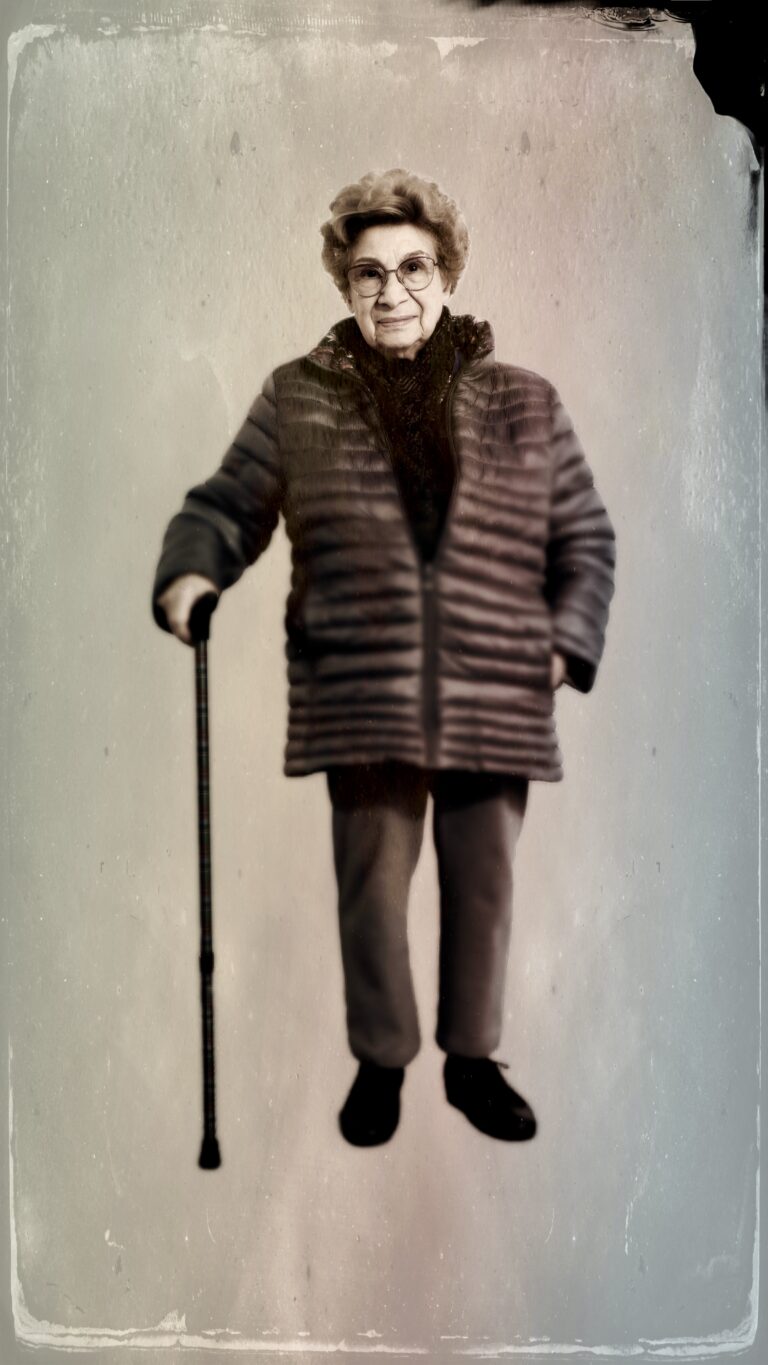
Più di 85 anni fa Ornella sgambettava in questa bottega, adesso ha 92 anni e questo è stato il negozio dei sui nonni e poi dei suoi genitori.
Da inizio novecento agli anni sessanta Fatacadabra è stata la bottega degli ortolani di San Frediano.
“Questo è stato il negozio di ortolano dei miei nonni del quale erano molto orgogliosi.
A quei tempi i negozi di alimentari restavano aperti 7 giorni su sette, per cui bisognava lavorare tanto, con passione e anche con profitto.
Fuori del negozio c’erano due orci, uno con peperoncini sotto aceto, l’altro con olive sotto ranno, tutto “fatto in casa” , come si suol dire. Inoltre in una grande caldaia venivano cotte le verdure stagionali quali le bietole, gli spinaci, le rape, le zucchine, i cavolfiori, le barbine (barbabietole, ndr) rosse e le castagne (ballotte); in modo che quando i clienti tornavano tardi dal lavoro, trovavano già pronte le verdure da mettere a pranzo o a cena.”
Ornella mi racconta per filo e per segno come era sistemato il negozio: “Davanti avevamo due banchi di marmo con gli scarichi dove esponevamo e lavavamo le verdure, qui c’era il tavolo dove mangiavo da bambina, lì la caldaia, là il caminetto, accanto il pozzo per l’acqua e nella corte avevamo pure le galline.”
Più che emozionata è contenta di aver trovato il fondo aperto, per poterlo rivedere e ricordare.
La figlia Donatella mi dice “La mi c’ha fatto passare davanti un monte di volte in questi anni, ma l’era sempre chiuso e adesso che l’ha visto ì’bandone aperto la s’è infilata dentro”.
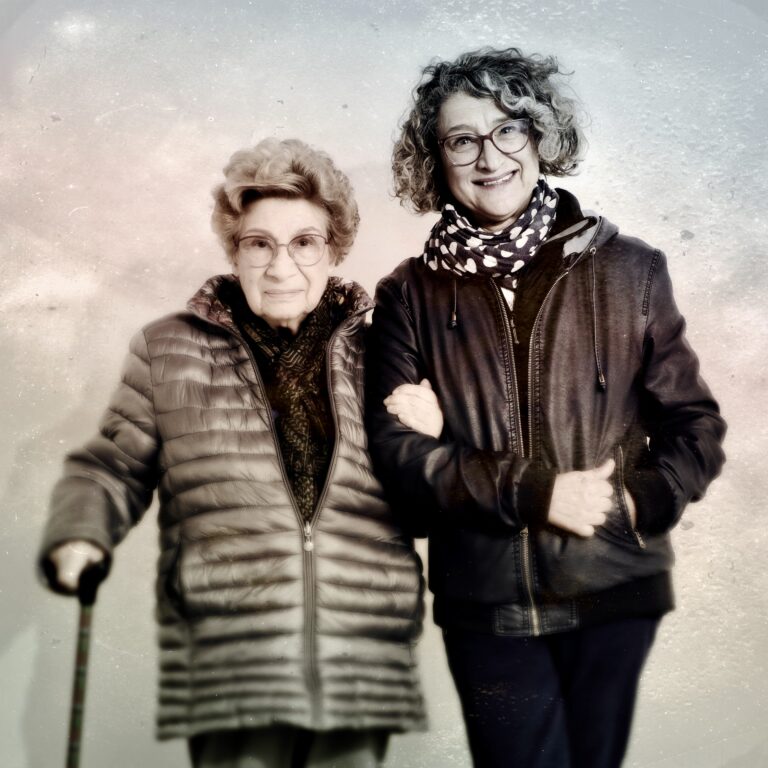
Ornella e Donatella tornano a trovarmi e mi portano alcune vecchie foto della bottega. La più antica è del 1903, quella più recente del 1961. Tutte sono conservate all’Archivio Storico del Comune di Firenze, insieme alle didascalie che riportano virgolettati i ricordi di Ornella. A testimonianza del fatto che si tratta di un luogo che contribuisce “alla conoscenza e alla salvaguardia della memoria cittadina” (cit. Archivio Storico del Comune di Firenze)
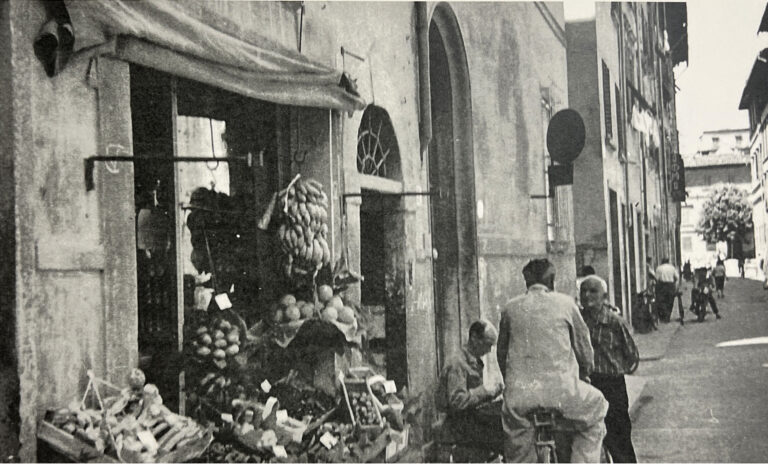
Quando se ne va Ornella salutandomi mi dice una cosa bellissima:
“Sono contenta che adesso qui ci siano persone che ci tengono alla bottega”.
E adesso che ne conosciamo la storia ci teniamo ancora di più, mi viene da dire.
Come i nonni di Ornella, siamo anche noi orgogliosi di questa bottega, soprattutto di averla lasciata tale e per essere riusciti a non farci irretire dal canto delle sirene che poteva spingerci a facili operazioni commerciali. Permettetemi di dire che la valorizzazione del centro storico fiorentino passa anche da queste decisioni coraggiose di singole piccole realtà.
Leo Brogioni
Fatacadabra: an artisan studio-shop with 120 years of history
Mrs. Ornella is very elderly. She dresses with care and elegance, walks hunched over, leaning on a beautiful cane or on her daughter Donatella, who accompanies her everywhere — even today, as they stop in front of the windows of our studio-shop at Via Santa Monaca 11 Rosso.
From my table inside, I see them observing carefully, for a long time. Then they come in, whispering, looking around.
It’s clear they’re not the least bit interested in our artworks.
Donatella helps her mother down the steps. Ornella does it with difficulty, with effort, but you can tell it matters to her.
I begin to wonder — why is she making such an effort to see everything? What is she looking for?
They notice me, and that’s when the journey through time begins.
More than 85 years ago, Ornella used to run around this very place. Now she’s 92, and this used to be the shop of her grandparents, then of her parents.
From the early 1900s to the 1960s, Fatacadabra was the greengrocer’s shop of the San Frediano neighborhood.
“This was my grandparents’ greengrocer’s shop, and they were very proud of it. Back then, grocery stores stayed open seven days a week, so it meant working hard, with passion — and also profit.
Outside the shop, there were two large jars: one filled with pickled chili peppers, the other with olives in brine — all homemade, as they used to say.
And in a large pot, seasonal vegetables were cooked: chard, spinach, turnips, zucchini, cauliflower, red beets, and chestnuts — so that when customers came home late from work, they’d find vegetables ready to eat for lunch or dinner.”
Ornella tells me in great detail how the shop was laid out:
“In front, we had two marble counters with drains, where we displayed and washed the vegetables. Here was the table where I ate as a child, over there the big pot, the fireplace, next to it the well, and in the back courtyard we even had chickens.”
She’s not so much emotional as she is happy — happy to find the place open again, to be able to see it and remember.
Her daughter Donatella tells me:
“She’s made me walk past here a hundred times over the years, but it was always closed. And now that she saw the shutter open, she just slipped right in.”
Ornella and Donatella come back to visit and bring old photographs of the shop.
The oldest is from 1903, the most recent from 1961.
All are kept at the Historical Archive of the Municipality of Florence, along with captions quoting Ornella’s memories word for word — as proof that this is a place that contributes “to the knowledge and preservation of the city’s memory” (from the Historical Archive of the Municipality of Florence)
As she says goodbye, Ornella tells me something beautiful:
“I’m happy that there are people here now who care about the shop.”
And now that we know its story, we care about it even more, I’d say.
Just like Ornella’s grandparents, we too are proud of this place — especially for keeping it true to itself, and for resisting the call of easier commercial paths.
Allow me to say: the value of Florence’s historic center is also preserved by small, brave choices like this one.
Leo Brogioni

